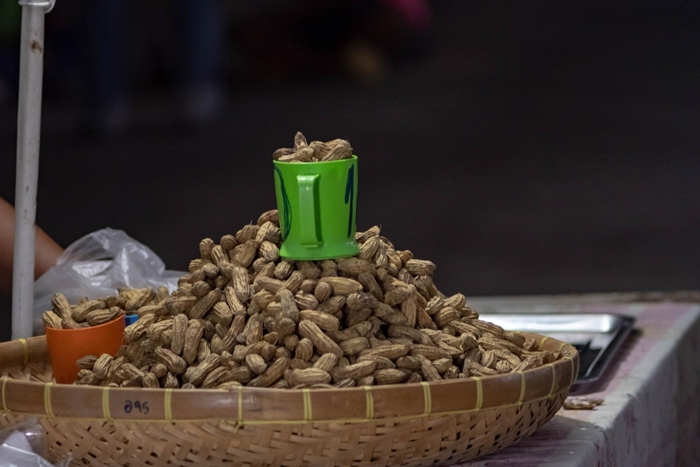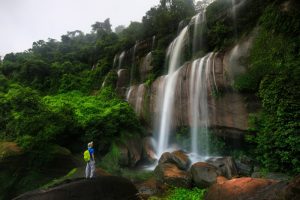
Kadalekai Parishe – The Annual Groundnut Fair of Basavanagudi
Bangalore is known today as India’s Silicon Valley, a city of innovation, technology, and cosmopolitan living. But woven into its fast-paced urban life are centuries-old traditions that remind residents and visitors alike of the city’s cultural roots. Among the most iconic of these traditions is the Kadalekai Parishe, or the annual groundnut fair, held in the historic neighborhood of Basavanagudi.
For over four centuries, this fair has transformed the bustling streets around the famed Dodda Ganesha Temple into a vibrant sea of colors, aromas, sounds, and rituals. Part marketplace, part cultural festival, part community gathering, Kadalekai Parishe is much more than just a groundnut fair. It is a celebration of Bangalore’s heritage, a meeting of rural and urban India, and a lively expression of devotion, commerce, and joy.
Whether you’re a lifelong Bangalorean, a newcomer to the city, or a curious traveler, experiencing the Kadalekai Parishe offers a glimpse into traditions that have stood the test of time. This guide dives into the festival’s history, its significance, the experiences it offers, and why it remains one of the city’s most beloved annual events.
The Origins of Kadalekai Parishe
The history of Kadalekai Parishe stretches back to the 16th century. According to legend, farmers from nearby villages once faced a recurring problem: wild bulls would enter their groundnut fields and destroy the crops just as harvest season began. Seeking divine intervention, the farmers prayed to Lord Ganesha at the Dodda Ganesha Temple in Basavanagudi.
It is said that their prayers were answered, and in gratitude, the farmers began offering the first harvest of groundnuts to the deity. Over time, this gesture evolved into a community tradition, attracting more farmers from surrounding areas. What began as a small thanksgiving ritual grew into a large-scale fair, bringing together villagers, city dwellers, and traders.
Today, centuries later, the tradition continues. The fair not only honors Lord Ganesha but also serves as a platform for farmers to sell their produce directly to city residents. In this way, Kadalekai Parishe beautifully blends spirituality with commerce, creating an event that is both sacred and social.
The Timing and Location
The Kadalekai Parishe usually takes place every year in November or December, coinciding with the harvest season for groundnuts. The exact dates vary according to the Hindu lunar calendar, typically falling on the last Monday of the Karthika month.
The festival is centered around Basavanagudi, one of Bangalore’s oldest neighborhoods, known for its temples, heritage homes, and bustling markets. The streets surrounding the Dodda Ganesha Temple—especially Bull Temple Road—become the heart of the celebration.
From the temple steps to the nearby lanes, every inch of space is filled with vendors selling groundnuts, handicrafts, toys, clothes, food, and more. For two days, Basavanagudi transforms into a carnival that attracts thousands of visitors from all over the city and beyond.
The Rituals and Offerings
At its core, Kadalekai Parishe remains a religious festival. Farmers from neighboring districts such as Kolar, Chikkaballapur, and Tumkur bring their freshly harvested groundnuts to offer at the Dodda Ganesha Temple. The massive idol of Lord Ganesha, often adorned with garlands and flowers, becomes the focal point of devotion.
Groundnuts—both raw and roasted—are heaped in large piles, symbolizing abundance and gratitude. Devotees believe that offering groundnuts to Lord Ganesha ensures blessings for good harvests, prosperity, and protection.
As the temple rituals unfold, priests chant prayers, lamps are lit, and a steady stream of worshippers file in to seek blessings. The spiritual atmosphere combines seamlessly with the vibrant market outside, creating a unique fusion of devotion and festivity.
The Marketplace Experience
While the temple rituals form the spiritual heart of Kadalekai Parishe, the surrounding marketplace is what makes the fair so lively and memorable. Walking through the streets, you’re greeted by:
- Heaps of groundnuts in every variety—raw, roasted, salted, spiced, shelled, and unshelled. Vendors shout out offers, inviting visitors to taste before buying.
- Handicrafts and toys, from wooden spinning tops and clay figurines to colorful bangles and trinkets. These stalls are especially popular with children.
- Clothing and textiles, including sarees, kurtas, and scarves, often sold at festive discounts.
- Street food delights, with the aroma of dosas, vadas, bajjis, and chaats filling the air. Stalls serving hot sugarcane juice and masala tea keep the crowds energized.
The fair’s marketplace has something for everyone, making it as much a shopping festival as a religious one. Many families stock up on dry fruits, snacks, and home essentials during the event, while youngsters enjoy the novelty of carnival-like shopping under strings of lights.
A Cultural Melting Pot
One of the most fascinating aspects of Kadalekai Parishe is its ability to bring together people from different walks of life. Farmers from rural Karnataka rub shoulders with software professionals from the city. Families who’ve been attending the fair for generations mingle with first-time visitors curious about the tradition.
The fair also features folk performances, music troupes, and street entertainers who add to the festive energy. It’s not unusual to hear the beat of drums mixing with the hum of bargaining shoppers, or to see children laughing as they clutch brightly painted toys while their parents carry bags of groundnuts.
For many Bangaloreans, attending the fair is not just about shopping—it’s about reliving childhood memories, participating in community life, and celebrating the city’s cultural fabric.
Photography and Visual Splendor
For photographers and visual storytellers, Kadalekai Parishe is a feast for the eyes. From the towering idol of Lord Ganesha bathed in light to the colorful piles of groundnuts and bustling market stalls, every corner offers a striking image.
The fair is especially magical in the evenings, when decorative lights illuminate the streets, casting a golden glow over the crowds. The juxtaposition of traditional rituals against the backdrop of a modern city makes for powerful visuals that capture Bangalore’s unique identity.
Practical Tips for Visiting Kadalekai Parishe
If you’re planning to experience the groundnut fair, a little preparation goes a long way:
- Best Time to Visit: Arrive early in the morning to witness the temple rituals or in the evening to enjoy the fair at its most vibrant.
- Getting There: Basavanagudi is well connected by metro and buses. Parking can be a challenge during the fair, so using public transport or ride-sharing is advisable.
- What to Carry: Bring cash in smaller denominations, as many vendors do not accept digital payments. Carry a reusable bag for purchases and a bottle of water to stay hydrated.
- Dress Comfortably: Wear light, breathable clothes and comfortable shoes—you’ll be walking a lot.
- Respect the Rituals: Remember that at its heart, this is a religious festival. Be mindful near the temple and avoid disrupting prayers or offerings.
Beyond the Groundnuts – Exploring Basavanagudi
Attending Kadalekai Parishe also gives you the perfect excuse to explore Basavanagudi, one of Bangalore’s oldest and most culturally rich neighborhoods. After soaking in the fair, you can:
- Visit the Bull Temple, dedicated to Nandi, the sacred bull, which gives Basavanagudi its name (“Basava” meaning bull).
- Walk through Bugle Rock Park, a green space filled with ancient rock formations and shaded walkways.
- Explore Gandhi Bazaar, a bustling market famous for flowers, spices, and South Indian eateries like Vidyarthi Bhavan.
- Stop by heritage cafés serving iconic dosas and filter coffee, keeping the old-world charm alive amidst modern Bangalore.
Together, these attractions make Basavanagudi a neighborhood where tradition thrives alongside everyday city life.
Why Kadalekai Parishe Still Matters
In an era where global brands and online shopping dominate, the continued popularity of Kadalekai Parishe speaks volumes about Bangalore’s cultural resilience. The fair is a reminder that festivals are not just about rituals but also about community, identity, and continuity.
For farmers, it remains an important source of income and recognition. For city residents, it’s a chance to reconnect with tradition and community life. And for the city itself, it’s a proud reminder of its heritage—a celebration that belongs as much to its past as to its present.
Final Thoughts
Kadalekai Parishe is more than just a groundnut fair—it is a living tradition that binds Bangalore’s past and present. It is where devotion meets trade, where rural and urban cultures intersect, and where the city slows down to honor its roots. Walking through the bustling lanes of Basavanagudi during the festival, you’re reminded that despite rapid modernization, Bangalore’s heart still beats to the rhythm of its traditions.
For visitors, the experience is unforgettable: the sounds of temple bells and folk drums, the sight of groundnuts piled high, the taste of hot snacks under twinkling lights, and the sense of community that permeates the air. Attending Kadalekai Parishe is not just about buying groundnuts—it’s about celebrating Bangalore itself.
And when your day at the fair comes to an end, you’ll want a place to rest that complements the city’s energy. That’s where hotels in Bangalore like Olive Living come in. With their modern amenities, stylish interiors, and warm atmosphere, Olive Living ensures that your cultural journey continues in comfort. Whether you’re visiting the city for a short trip or staying longer, Olive Living offers the perfect blend of tradition and modernity—just like Bangalore itself.




